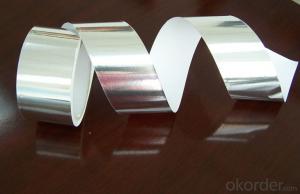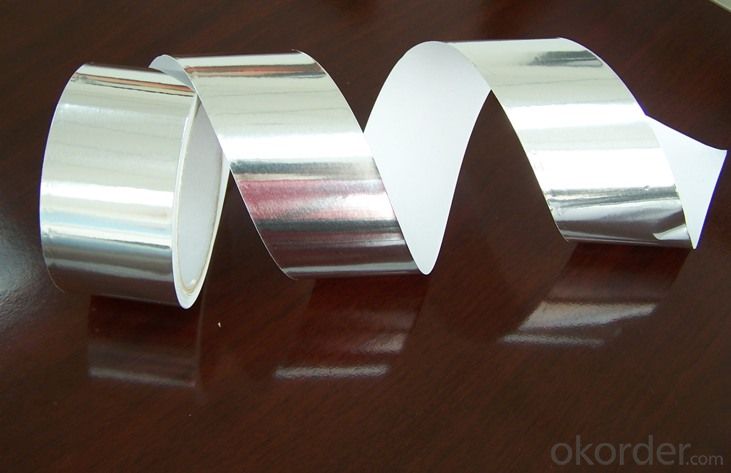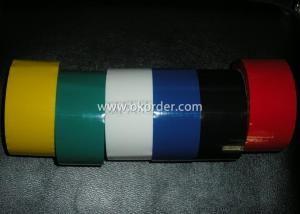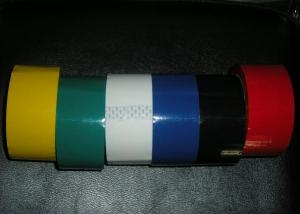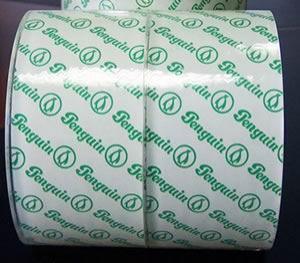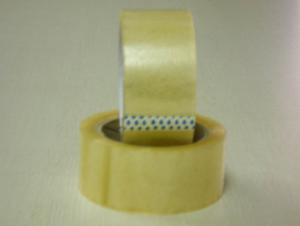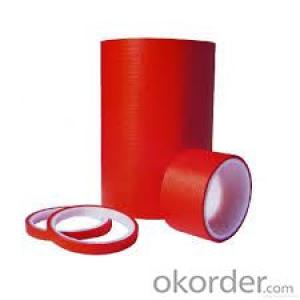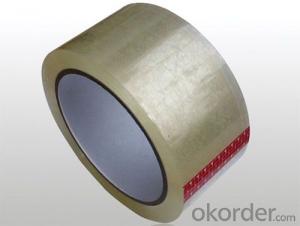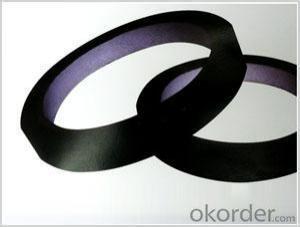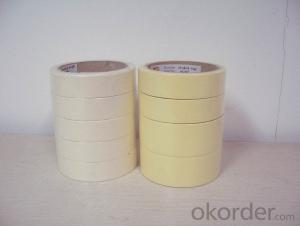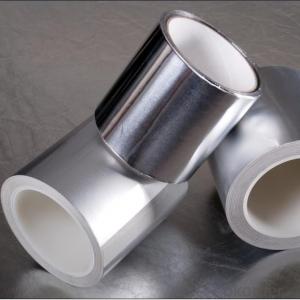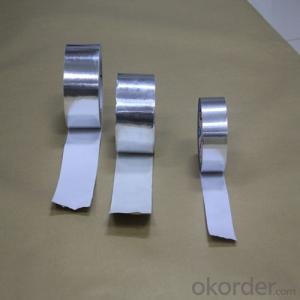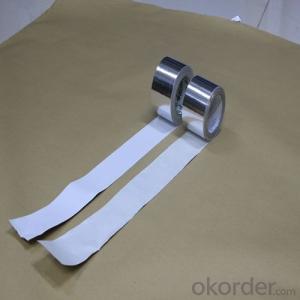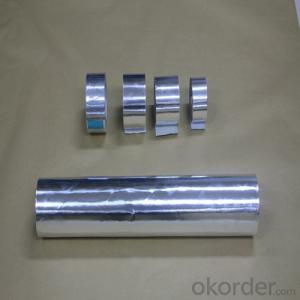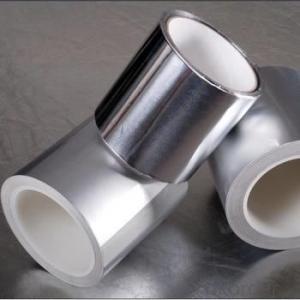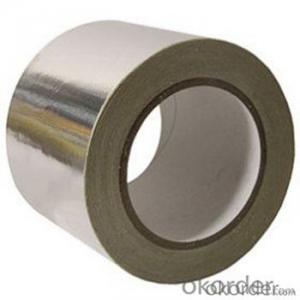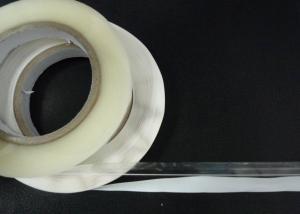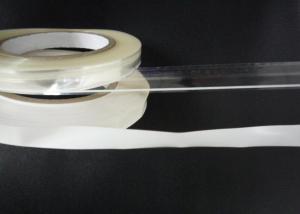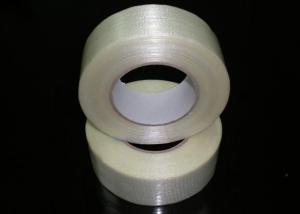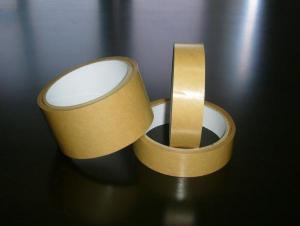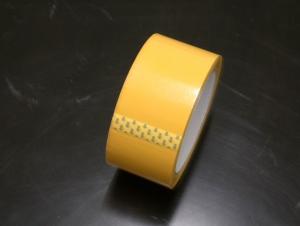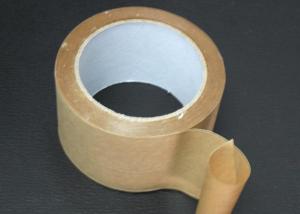Re-sealable Food Packaging Tape - Solvent Based Acrylic Aluminum Foil Tape T-S3601P
- Loading Port:
- Shanghai
- Payment Terms:
- TT OR LC
- Min Order Qty:
- 3000 roll
- Supply Capability:
- 1000000 roll/month
OKorder Service Pledge
OKorder Financial Service
You Might Also Like
Solvent based acrylic aluminum foil tape
Construction: 36 micron Aluminum Foil plus high performance solvent acrylic adhesive plus easy-release silicone release paper
Carrier: Aluminum Foil
Adhesive: solvent based acrylic
Foil thickness: 36 micron
Adhesion to steel: 20N/25mm
Tensile strength: 50N/25mm
Elongation: 3.0%
Service temperatures: -20~80 DC
Typical applications: HVAC industry for joining and sealing foil-scrim-kraft facing laminated fiberglass blanket/duct board joints and seams; joining and sealing flexible air duct seams and connections. May also be used for other industrial uses requiring a tape with these characteristics and benefits.
Jumbo size: 1.2m x 1200m
Log roll: 1.2m x 45m/50m/100m
Cut roll: As customer required
Shelf time: 12 months
Company information
CNBM International Corporation (CNBM International) is the most important trading platform of CNBM Group Corporation, a state-owned company under the direct supervision of State-owned Assets Supervision and Administration Commission of the State Council.In line with the business, CNBM International launched E-business platform Okorder.com.CNBM International is highly recognized by its business partners and clients all over the world and has obtained rapid development under the spirit of win-win. We will carry on the mutual beneficial, innovative and revolutionary trading structure as we did before, create value for our employees, share holders and clients and benefit the whole society in our future developmen.
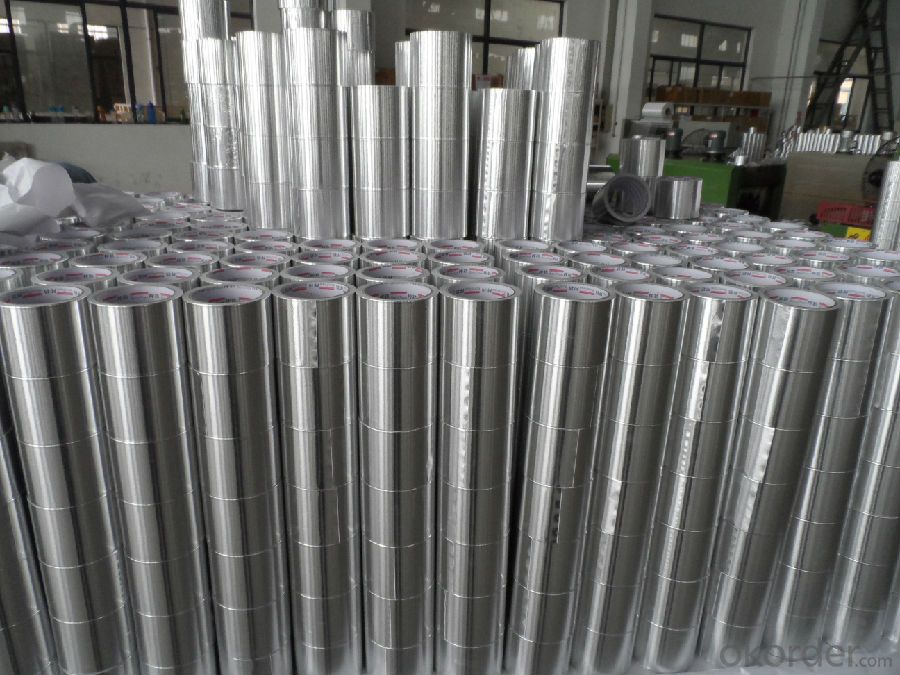

- Q: Can packaging tape be used for sealing recreational or outdoor gear?
- Yes, packaging tape can be used for sealing recreational or outdoor gear. It provides a strong and durable bond, making it suitable for securing and sealing various types of gear such as tents, sleeping bags, or backpacks. However, it's important to consider the specific requirements and conditions of the gear being sealed, as there may be more specialized options available for certain items.
- Q: Can packaging tape be used for mailing packages?
- Yes, packaging tape can definitely be used for mailing packages. It is specifically designed to securely seal packages and ensure they stay intact during transit. Packaging tape is strong and durable, making it ideal for securing boxes, envelopes, or other types of packaging materials. It is commonly used in shipping and mailing applications and is available in various sizes and strengths to accommodate different package sizes and weights. Whether you are sending a small envelope or a large box, packaging tape is an essential tool to ensure your package is properly sealed and protected during the mailing process.
- Q: Can packaging tape be used for repairing torn paper?
- No, packaging tape is not suitable for repairing torn paper. It is designed for sealing and securing packages, not for mending torn paper.
- Q: What are the different types of packaging tape?
- There are several different types of packaging tape available for various packaging needs. 1. Clear Packaging Tape: This is the most common type of packaging tape, typically made from polypropylene or acrylic materials. It is transparent, allowing for easy visibility of labels or printed information on the package. Clear packaging tape is versatile and suitable for most general packaging applications. 2. Brown Packaging Tape: Also known as brown packing tape or brown carton sealing tape, this type of tape is made from strong, durable materials such as polypropylene or paper. It is commonly used for sealing cardboard boxes or packages, providing a secure and tamper-evident seal. Brown packaging tape is ideal for shipping and general packaging purposes. 3. Masking Tape: While not specifically designed for packaging, masking tape can be used for light-duty packaging tasks. It is made from a thin and easily tearable paper and is commonly used for holding, bundling, or labeling packages. However, masking tape may not provide the same level of strength and security as dedicated packaging tapes. 4. Duct Tape: Similar to masking tape, duct tape is not primarily designed for packaging purposes but can be used in certain situations. It is a strong and durable tape, typically made from cloth or reinforced with fibers, and is known for its adhesive strength and versatility. Duct tape can be used for heavy-duty packaging tasks or for securing packages in challenging environments. 5. Specialty Packaging Tapes: There are various specialty packaging tapes available to cater to specific needs. Some examples include fragile tape, which has a warning message to indicate delicate items inside the package, or double-sided tape, which allows for secure attachment of items or joining of materials. Additionally, there are tapes designed for specific industries, such as freezer tape for sealing packages in cold storage or electrical tape for insulating electrical wires during packaging. Overall, the choice of packaging tape depends on the specific requirements of the packaging task, including the type of materials being sealed, the desired level of security, and any specific conditions or considerations.
- Q: Can packaging tape be used for sealing furniture or home goods?
- Yes, packaging tape can be used for sealing furniture or home goods. Packaging tape is designed to provide a secure and strong seal, making it suitable for various purposes including sealing boxes and packages. When used on furniture or home goods, packaging tape can help keep the item protected during transportation or storage. It is important to ensure that the tape is applied properly and that it does not damage the surface or leave any residue. Additionally, depending on the weight and size of the item, it might be more appropriate to use specialized tapes or techniques for sealing furniture or home goods to ensure maximum protection.
- Q: Can packaging tape be used for sealing packages for shipping?
- Yes, packaging tape is specifically designed for sealing packages during shipping. It provides a strong and secure seal to prevent any damage or tampering to the contents of the package.
- Q: What is packaging tape?
- Packaging tape is a type of adhesive tape that is specifically designed for sealing and securing packages and boxes. It is commonly used in various industries, shipping companies, warehouses, and households to ensure that packages are properly sealed and protected during transportation or storage. This type of tape is typically made from durable materials such as polypropylene or polyester, which makes it resistant to tearing and provides strong adhesion. Packaging tape is available in different widths and thicknesses to accommodate various package sizes and weights. It is often transparent or brown in color, but can also come in different colors or patterns for aesthetic purposes or to differentiate between different types of packages. Overall, packaging tape is an essential tool in ensuring the safety and security of packages during transit or storage.
- Q: Transparent sealing tape 48mm*60y what do you mean?
- Ha ha, the top few are too funny, don't mislead others:
- Q: Does packaging tape come in different adhesion levels for various surfaces?
- Yes, packaging tape does come in different adhesion levels for various surfaces. There are different types of packaging tapes available in the market, each designed to adhere to specific surfaces. For example, there are packaging tapes with low adhesion levels that are ideal for delicate surfaces such as paper or cardboard, as they provide a secure bond without damaging the surface when removed. On the other hand, there are high adhesion packaging tapes that are specifically formulated for sticking to rough or uneven surfaces, such as plastic or metal. These tapes have a stronger adhesive to ensure a secure hold in challenging environments. Additionally, there are also packaging tapes with medium adhesion levels that are versatile and suitable for general-purpose usage on a variety of surfaces. The different adhesion levels allow users to choose the most appropriate packaging tape based on the specific surface they need to adhere to, ensuring optimal performance and reliability.
- Q: What are the tapes for packing tape?
- Double sided tape writing, leather tape, textured adhesive tape, high temperature resistant double sided adhesive tape, industrial adhesive tape
Send your message to us
Re-sealable Food Packaging Tape - Solvent Based Acrylic Aluminum Foil Tape T-S3601P
- Loading Port:
- Shanghai
- Payment Terms:
- TT OR LC
- Min Order Qty:
- 3000 roll
- Supply Capability:
- 1000000 roll/month
OKorder Service Pledge
OKorder Financial Service
Similar products
Hot products
Hot Searches
Related keywords
